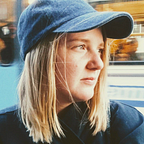Internet of nature
I’m pretty sure most of you have heard about the “Internet of Things” (IoT) by now. If not, in brief, IoT refers to everyday physical devices, appliances and other ‘things’ that have been fitted with internet connectivity, which makes them capable of sending and receiving data. This effectively turns them into ‘smart’ objects, capable of ‘talking to’ or interacting with one another. Simultaneously the technology also allows devices to be controlled or monitored remotely. Now a new parallel trend is on the rise — the “Internet of Nature”.
The MIT researcher Dr. Nadina Galle defines IoN as a technology that can
“… provide the framework for deploying emerging technologies to protect, restore, and enhance urban nature.” That means that IoN makes use of emerging technologies, like sensors, satellite imagery, computer algorithms, to represent urban ecosystems and turn that into data which helps us better understand and assist nature.
In 2019 Galle co-wrote the article “The Internet of Nature: how taking nature online can shape urban ecosystems” in which she and the other writers explored if IoN can be used to bridge the gap between greener and smarter cities. Whilst also understanding what the future of urban ecosystem management may look like in an age of rapid urbanisation and digitisation. The writers believe that the creation of an IoN along with the ecosystem intelligence it provides, will bring an opportunity to elicit and understand urban ecosystem dynamics, promote self-sufficiency and resilience in ecosystem management. As well as to enhance connections between urban social and ecological systems. They argue that bringing nature online will be the next frontier in ecosystem management and that these advancements are going to change our relationship with the natural world in the urban age.
But what are some practical examples of IoN applications you might wonder? Well, here are two very interesting cases involving trees. TreeMania is a soil sensor company that provides data for the cultivation, planting, and care of urban trees and shrubs. TreeMania utilizes the IoN by combining IoT (Internet of Things) soil sensors, long-range (LoRa) and 4G infrastructure with artificial intelligence (AI) to collect soil health data. They then compile the data into dashboards which provides the basis for real-time and historical data analytics, in order to help contractors optimize tree care, tree watering and soil health. Vodafone on the other hand has partnered up with the UK’s Department for Environment, Food and Rural Affairs (Defra) and Forest Research. Together they are exploring how technology can be used to monitor the part trees play in tackling climate change, the project uses Narrowband-IoT (NB-IoT) sensors attached to trees in Alice Holt Forest and Harwood Forest to collect data which is then analyzed to assess how temperature, humidity and soil moisture impact the trees’ growth and function.
These early examples paint a vision of a future where connectivity could be a part of all kinds of natural ecosystems, from oceans to deserts to tundra. Meaning it could result in the entire natural world being monitored, and the impact of regeneration schemes quantified and optimized for ultimate efficacy.
References
Vodafone report
The internet of nature: How taking nature online can shape urban ecosystems
The Internet of Nature: A Promising Way to Bring Technology and Ecology Together at Grey To Green
How the ‘Internet of Nature’ can help optimize water use for cities’ ambitious tree-planting targets
